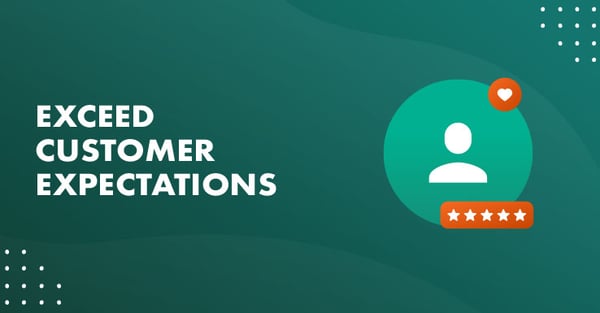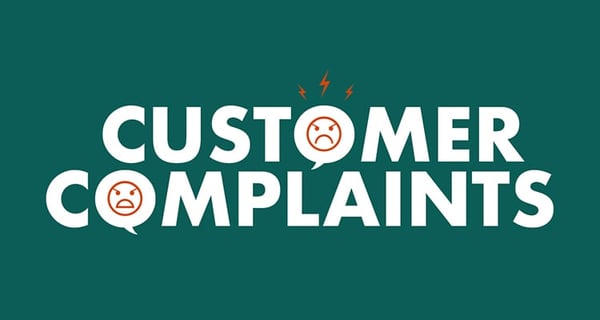It’s only used by customer service teams, right?
Well, not exactly.
With features such as ticket management, autoresponders and queue management, several departments within your company can use customer service software to become more efficient in your daily work life.
So, who else can benefit from customer service software?
One example is the IT department. If your tech support teams have a first and a second line for support, then you could use ticket management to handle internal requests.
Marketing teams, too, can take full advantage of the customer service software.
We've all heard the phrase that "customer service is an extension of marketing". And this applies to the technology, too. The SuperOffice marketing team have been using SuperOffice Service as part of our marketing tech stack for years. We’re not the only company to do so, either.
While writing this article, I discovered research from Bluewolf, a CRM consultancy firm, that found more than three-quarters (77%) of marketers are using customer service software features to boost marketing ROI.

Furthermore, more than two-thirds of marketing and customer service teams now collaborate together and work towards common goals and metrics - so there's never been a better time to leverage and share technology.
So, how can customer service software play a role in the marketing strategy?
Today, I’m going to share with you our exact process for how we, SuperOffice marketing, use customer service, for lead generation, email marketing and user onboarding.
The best part? These are all standard out-of-the-box features. No customizations required!
1. Lead management
In most cases, if a lead signs up on your website, then the information is sent directly to a CRM.
If that process works for you, then great – keep doing it.
For us, each time a visitor signs up on our website, their contact information is sent directly to SuperOffice Service – our customer service solution. And the reason we send it directly to Service first is because we want to review the leads before we add them into our database.
By introducing an additional step into the process, we’re able to keep the SuperOffice CRM database clean and avoid adding duplicate contacts, fake email addresses (i.e. DonaldDuck@Disney.com) and people who sign up but are outside our target market.
Our goal is to respond to each new lead within 90 minutes, so throughout the day, we login to SuperOffice Service and review new sign-ups.
For each new lead, we search the SuperOffice CRM contact list to see if the person exists in our database. If the lead does exist, then we forward their information to a sales rep to follow up with the them. But, would an existing contact sign up on your website more than once?
Yes. And here’s a real-life example.
A lead first signs up to a free trial of our CRM solution, but during the trial, they realize that it’s a sales solution that can solve their business pain. They visit the SuperOffice website and sign up to our Sales solution. Rather than sending this information to a new sales rep, we inform the sales rep that the lead is currently in contact with. It then makes it easier for our sales team to reach out and continue their dialogue.
Now, if the lead doesn’t exist in our database, we then need to conduct research into who this person is. This typically involves a quick Google or LinkedIn search to find out who they are and where their business is based. If they’re based in our target markets, then we’ll add the contact into SuperOffice CRM and notify sales. If not, we’ll let them know that we can’t take this any further.
Yes, it’s an additional step into our lead management process, but it’s a quality control step. And I think we can all agree that quality is more important than quantity, right?

2. Hard email bounce
Even though we try to keep the quality of our data high, we still end up with hard email bounces (i.e. an email address that no longer exists). This usually happens when an employee leaves a company. Given that we have more than 150,000 customers who use SuperOffice CRM every single day, hard email bounces happen more often than you would think!
Therefore, each time we send out an email marketing campaign, we need to find a way to handle these hard bounces – and that’s where SuperOffice Service comes in.
Our email campaigns are sent from a specific email address that has been set up in SuperOffice Service. Of course, we use SuperOffice Marketing to send out the actual marketing campaign, but then each time there’s a hard bounce, we’re notified in Service.

We really don’t want to continue to send out email campaigns to an inactive email address. That’s a sure-fire way to be added to an email service provider’s blacklist!
By handling hard email bounces, Service becomes a repository for the marketing team to review which email addresses are no longer active and update the contact in SuperOffice CRM.
Staying on top of hard bounces has another benefit – it helps us build our email list.
Anytime there’s a hard email bounce, we inform our sales reps to reach out to our main contact at that company to find out if there’s someone else in that team or department who would like to subscribe to our email campaigns.
3. Autoresponders
At any given time, we have between 10-20 web forms on our site.
These forms are used for event sign-ups, white paper downloads, as well as free trial and demo requests.
And it’s the free trial requests that allow our marketing teams to use the features of Service once again. We use SuperOffice Service because our free trial process is different than most SaaS websites. How, so?
On most SaaS websites, you can sign up for a free trial and get immediate access to the product or app. At SuperOffice, relationships are important to us, so we’d like to get know you first. Typically, it’s a quick phone call or a video meeting. The more we understand your challenges, the more we can help you solve them!
Another reason why we don’t give you immediate access is because CRM is a little more complex than, say, signing up to a new email account. It’s not just a case of adding your contact information and off you go… CRM impacts your entire business and you need to think of CRM as more than just a contact management tool, if you want to succeed.
But I digress…
If you sign up to a free trial request on the SuperOffice website, this information is sent directly to a specific inbox (i.e. trial@superoffice.com) set up with an autoresponder to thank you for signing up.
Have you ever sent an email to a customer service department and received an autoreply that informs you that the email has been received? These emails typically include a ticket ID and how long you can expect to wait until you hear from the support team.
Well, our free trial autoresponder acts in the same way. It’s an automated email that informs the customer and sets expectations on when they will get access.

But why do we give such prominence and attention to free trial sign-ups?
A lead that signs up for a trial or demo is much more likely to buy than, say, a white paper download. This means that it’s important to notify our sales teams quickly (within 90 minutes) about the “hot” new opportunity.
Another feature that alerts us of a new sign-up in SuperOffice Service is prioritization.
Prioritization is a feature that allows us to move important requests to the top of the email queue. In a customer service setting, you could prioritize requests that are time sensitive, so your support staff are handling the more urgent cases first.
(You can also search for priority requests using the Search function).

For the SuperOffice marketing team, our priority is based on the type of web form the lead completes. But you can also do this based on email address the request is sent to, if a request contains a specific word (i.e. “demo”) or if it’s sent from a particular group of customers – like your VIP customers.
All in all, the autoresponder feature works well for all types of forms on your website.
For example, if someone downloads a white paper, you can initiate an autoresponder that includes a link to the PDF link to that specific white paper. Another example is for an event sign-up, where the autoresponder content includes the event’s data and location.
It’s simple, but extremely effective.
Conclusion
New technologies can significantly ease the life of a marketing specialist.
In fact, one in three marketers are adding new technology to their stack on a monthly basis!
But, it’s not just about adding new MarTech in order to keep up with the current trends. The goal of using any kind of technology is to improve the way you work – and for us, that means using SuperOffice Service.
Marketing and customer service can work together. The SuperOffice marketing team use Service to handle website sign-ups, hard email bounces and auto-replies, which led to an improvement in lead management, email marketing and user on-boarding processes.
What marketing processes could you be improving by using customer service software?
For SuperOffice Marketing customers, upgrade to the Complete plan for only €10 extra per month and get full access to Service.
If you're not a SuperOffice customer, request a live demo to see how SuperOffice Service can support your marketing efforts.




